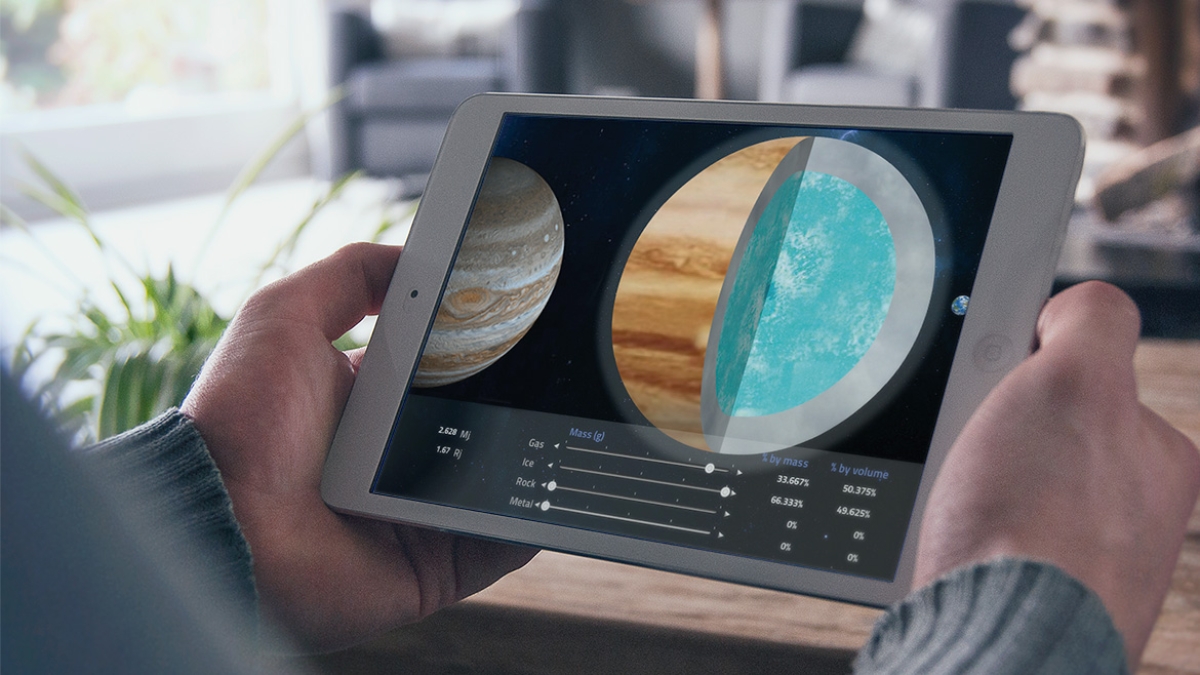Arizona State University’s School of Earth and Space Exploration is about to take the whole nation on a school tour.
Rock stars in their fields will guide virtual field tours of bodies in the solar system. Mars experts Phil Christensen and Jim Bell will help students explore the Red Planet. Enceladus researcher Ariel Anbar will show them Saturn’s tiny icy moon. Erik Asphaug will lead the way to asteroids.
Part of the school’s mission is outreach, said School of Earth and Space ExplorationThe School of Earth and Space Exploration is an academic unit of the College of Liberal Arts and Sciences. (SESE) director Lindy Elkins-Tanton, and with a new $10.18 million grant from NASA, SESE’s impact on schoolchildren will go from thousands to millions.
The school’s top researchers will develop next-generation digital learning experiences that incorporate NASA science content. The result of the five-year project will be “bite-size educational experiences” available for free on the Internet, according to Elkins-Tanton.
ASU is the sole Internet platform content-delivery method within the new NASA education program. “We’re it,” Elkins-Tanton said.
“There’s a huge need to reach out at scale,” she said. “And when you talk about scale, you’re talking about the Internet.”
NASA has a ton of content on the Web. ASU will work with designers to create interactive content on a platform that makes NASA data accessible and interactive.
“We were trying to take all those ideas and bring them to the next level of effectiveness,” said Elkins-Tanton, principal investigator on the project.
“The aim is to help learners become problem-solvers capable of exploring the unknown, rather than just mastering what is already known,” said Ariel Anbar, project deputy principal investigator. “It is learning science as process and as a universe of questions rather than as a dusty collection of facts.”
Students will go to a portal, select from a library of experiences and be launched into a cool NASA data-infused experience, Anbar said. It’ll be different from traditional NASA outreach, which typically buries the user in facts. In this effort, students will be taught to solve problems they haven’t seen before.
“You will be learning that material but through the context of this cool NASA exploratory data,” Anbar said. “Part of it is increasingly we’re trying to teach science not as facts, but as a process. ... Our theme is changing from mastery of what we know to the ability to explore the unknown.”
“The aim is to help learners become problem-solvers capable of exploring the unknown, rather than just mastering what is already known. It is learning science as process and as a universe of questions rather than as a dusty collection of facts.”
— ASU professor Ariel Anbar, project deputy principal investigator
SESE officials said they hope to get to a scale of millions of users.
“The learning experiences we’re going to be building will be interactive and adaptive,” Anbar said. “It will be, ‘Go look at this, and do it in a virtual space, and receive feedback.’”
To this end, SESE has put together a crack team, led by principal investigator Elkins-Tanton, deputy principal investigator Anbar, and co-investigators Steven Semken, Sheri Klug-Boonstra and Dror Ben-Naim. Other co-investigators include SESE’s Erik Asphaug, Jim Bell, Phil Christensen, Scott Parazynski, Meenakshi Wadhwa, Sara Imari Walker, David Williams and Patrick Young. With faculty like these on board, it will be like having Jacques Cousteau build your aquarium.
Together with adaptive learning provider Smart Sparrow, this team will develop personalized and adaptive learning experiences centered on astrobiology and “small bodies” such as Saturn’s moon Enceladus, Jupiter’s moon Europa, and asteroids. These are specific areas of expertise among the NASA subject-matter experts on the ASU team.
“They will bring their expertise to our content,” Elkins-Tanton said.
The grant comes from NASA's Science Mission Directorate. Their vision is to share the story, the science and the adventure of NASA's scientific explorations through stimulating and informative activities and experiences created by experts, delivered effectively and efficiently to learners of many backgrounds.
“SESE is known for combining the creative strengths of science, engineering and education, setting the stage for a new era of exploration,” Elkins-Tanton said. “With this grant, we can promote a greater public understanding and appreciation for science, and inspire a new generation of explorers. We hope to share the exciting world of NASA science in a way that is both approachable and interactive.”
In the near term, the focus will be on independent self-learners of science. In the longer term, the team seeks to expand the program to formal K-12 education, in coordination with NASA’s new education strategies.
“This grant brings together education powerhouses — ASU and NASA, together with a trusted edtech partner — to promote STEM education through exploration," said Sethuraman “Panch” Panchanathan, chief research and innovation officer and executive vice president at the ASU Knowledge Enterprise Development. “This opportunity helps ASU engage and empower learners from all backgrounds and proficiencies to master concepts, ask open-ended questions regarding what’s next, and prepare to explore the unknown with the help of technology.”
More Science and technology

CSI: Mars
By Wendee NicoleTravelling to Mars has loomed large in the public’s imagination since at least the late 1800s when H.G. Wells' “War of the Worlds” tale of a Martian invasion was serialized in print.…

ASU research is helping solve crimes
On TV, detectives solve crimes in 43 minutes (plus commercial breaks). In real life, it takes much more time — and many more minds, including researchers discovering new ways to analyze evidence and…

Compact X-ray laser lab aims to reveal deep secrets of life, matter and energy
X-rays allow us to view inside the human body to diagnose broken bones and other hidden problems. More recent X-ray advances are making it possible to see events at the scale of atoms and molecules,…


